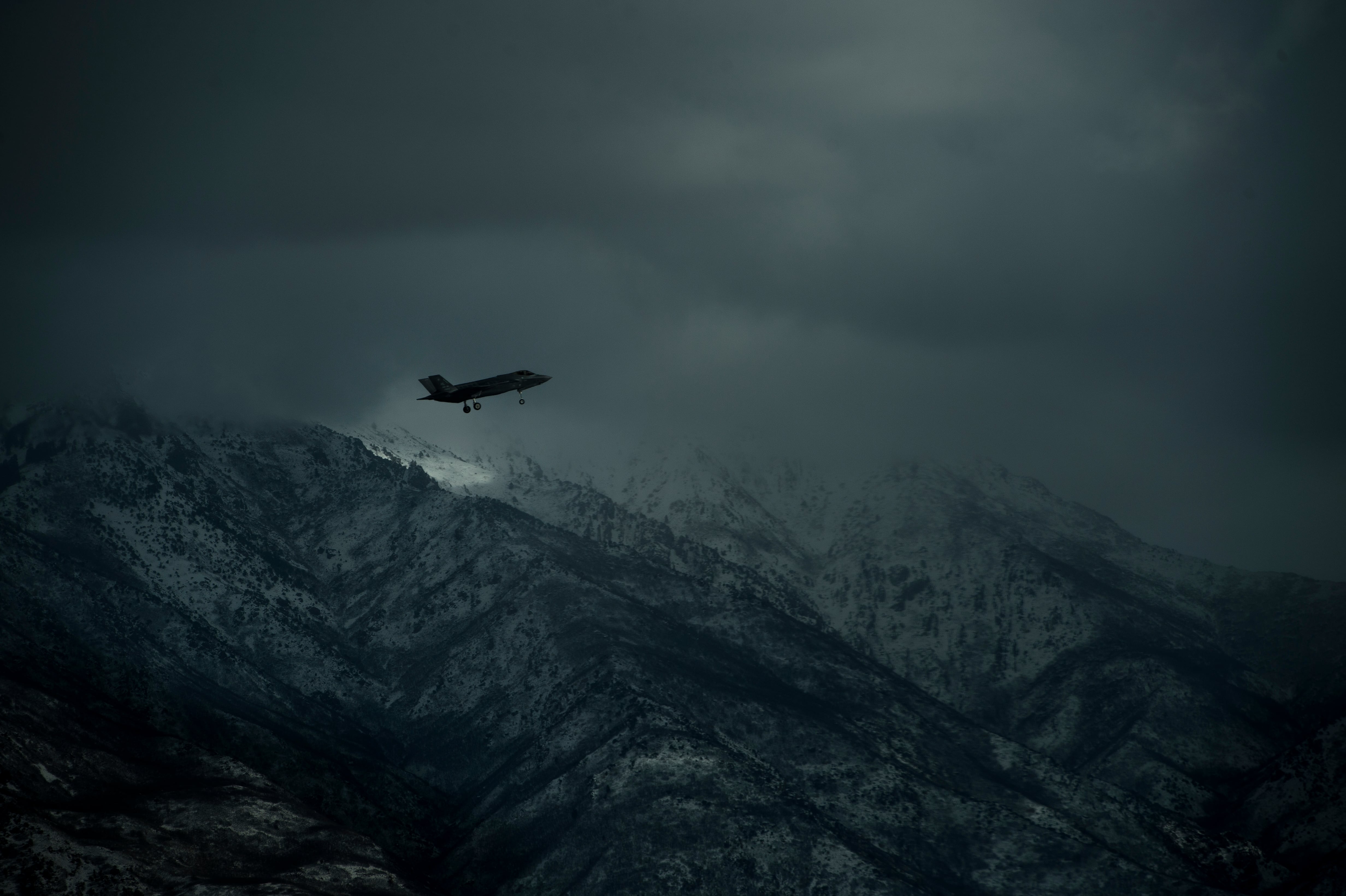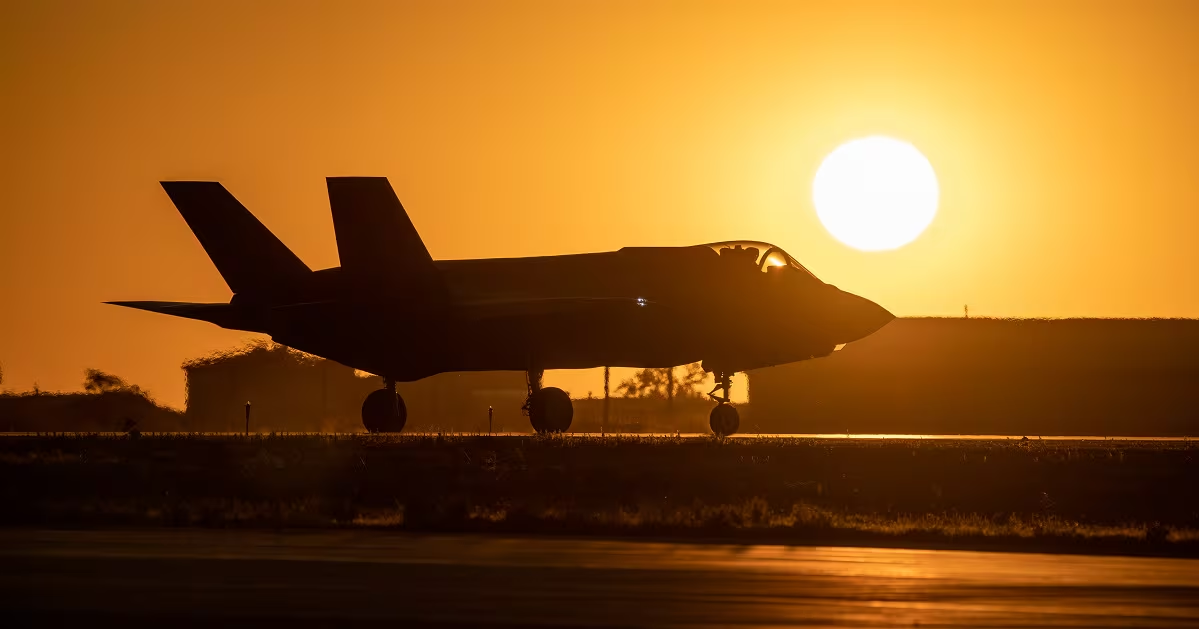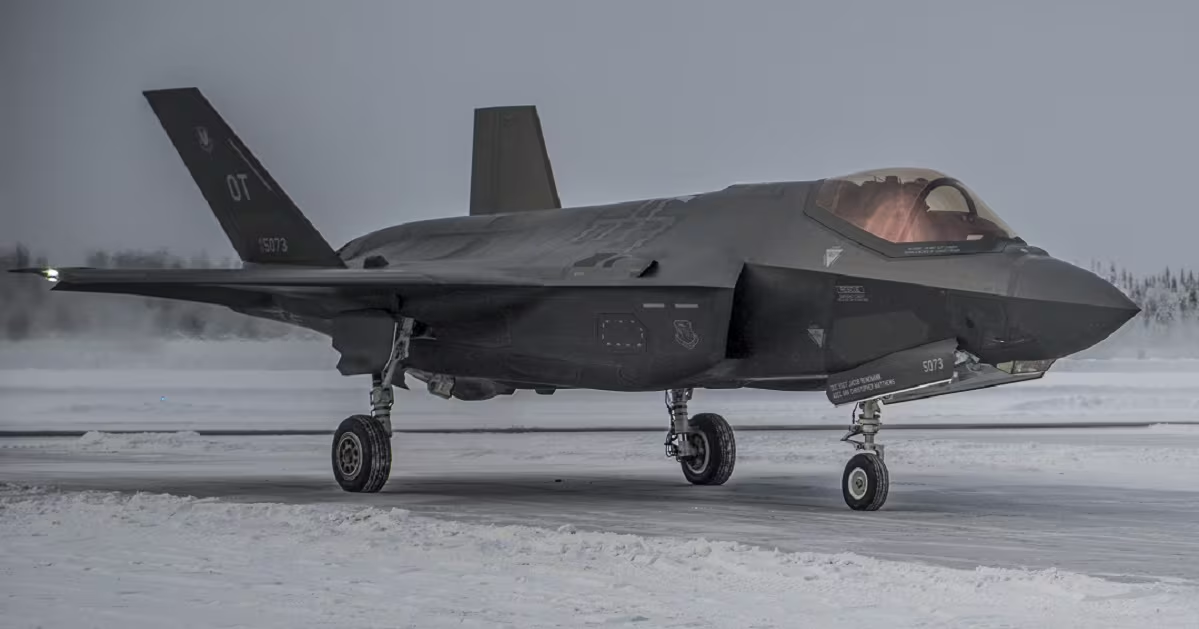WASHINGTON — An issue that risks damage to the F-35’s tail section if the aircraft needs to maintain supersonic speeds is not worth fixing and will instead be addressed by changing the operating parameters, the F-35 Joint Program Office told Defense News in a statement Friday.
The deficiency, first reported by Defense News in 2019, means that at extremely high altitudes, the U.S. Navy’s and Marine Corps’ versions of the F-35 jet can only fly at supersonic speeds for short bursts of time before there is a risk of structural damage and loss of stealth capability.
The problem may make it impossible for the Navy’s F-35C to conduct supersonic intercepts.
“This issue was closed on December 17, 2019 with no further actions and concurrence from the U.S. services,” the F-35 JPO statement read. “The [deficiency report] was closed under the category of ‘no plan to correct,’ which is used by the F-35 team when the operator value provided by a complete fix does not justify the estimated cost of that fix.
RELATED

“In this case, the solution would require a lengthy development and flight testing of a material coating that can tolerate the flight environment for unlimited time while satisfying the weight and other requirements of a control surface. Instead, the issue is being addressed procedurally by imposing a time limit on high-speed flight.”
The carrier-launched "C" variant and the short-takeoff-and-vertical-landing "B" version will both be able to carry out all their missions without correcting the deficiency, the JPO said.
The potential damage from sustained high speeds would influence not only the F-35’s airframe and the low-observable coating that keeps it stealthy, but also the myriad antennas located on the back of the plane that are currently vulnerable to damage, according to documents exclusively obtained by Defense News.
The JPO had classified the issues for the "B" and "C" models as separate category 1 deficiencies, indicating in one document that the problem presents a challenge to accomplishing one of the key missions of the fighter jet. In this scale, category 1 represents the most serious type of deficiency.
While it may seem dire that an aircraft procured for flying at supersonic speeds will be unable to do so for extended periods, the F-35 may not need to do it that often.
For the F-35, as opposed to the F-22 where supersonic flight is baked into its tactics, the ability to fly supersonic is more of a “break glass in case of emergency” feature, said Bryan Clark, an analyst with the Hudson Institute and a retired naval officer.
“Supersonic flight is not a big feature of the F-35,” Clark said. “It’s capable of it, but when you talk to F-35 pilots, they’ll say they’d fly supersonic in such limited times and cases that — while having the ability is nice because you never know when you are going to need to run away from something very fast — it’s just not a main feature for their tactics.”
In fact, going supersonic obviates the main advantages of the F-35, Clark said. “It sort of defeats all the main advantages of the F-35,” he explained. “It takes you out of stealthiness, it burns gas like crazy so you lose the range benefits of a single engine and larger fuel tank. When you go into afterburner, you are heating up the outside of your aircraft.”
That creates all kinds of signatures that can be detected by an adversary, Clark said.
What if?
But a retired naval aviator told Defense News last year that the limitations on the afterburner could prove deadly in close-combat scenarios.
The concept of operations for the F-35 is to kill an enemy aircraft before it can detect the fighter jet, but relying on long-range kills is a perspective that, for historical and cultural reasons, naval aviation distrusts. In the Vietnam War, when air warfare began heavily relying on missiles and moved away from the forward gun, it caused a spike in air-to-air combat deaths.

The lesson naval aviation took away was to prevent the latest and greatest technology from offsetting the learning of fundamentals, and it was the impetus behind the formation of Top Gun 50 years ago, a naval strike fighter course for training and tactics development.
“The solution is: ‘Hey, we’ll just limit the afterburner to less than a minute at a time,’ ” a retired naval aviator said when told of the issue. “Which, with what the aircraft is supposed to do and be capable of, that’s a pretty significant limitation.”
Primarily it would be an issue if the aircraft had to maneuver at high speeds to avoid a missile or survive a dogfight.
The issue is compounded for the Navy, which must operate forward for months at a time, because any significant issues with coatings or the structure of aircraft would require a depot-level repair. And so a damaged aircraft would remain damaged until its host ship returns to home port, reducing the combat effectiveness of the air wing.
“We might have to be operating at sea for eight months, so if you damage something on week one, guess what? It’s damaged for the rest of the deployment,” the aviator said. “And it affects your ability to evade detection by the enemy — you just degraded that asset permanently until you can get it somewhere where it can be fixed, at great expense and time.”
Other deficiencies
Three other category 1 deficiencies have also been officially designated as “closed," meaning they have either been fixed or the performance of the aircraft is being accepted as is, the JPO reported.
The so-called green glow deficiency has been closed out as of last July. Green glow refers to a green light emitted by the helmet-mounted display’s LED lights. That glow obstructs a pilot’s view of an aircraft carrier’s deck lights during landing operations at sea in very low light, such as that experienced at night.
The issue was closed “as a result of incorporating an improved Organic Light-Emitting Diode (OLED) Helmet Mounted Display (HMD),” the JPO told Defense News.
“The Generation III F-35 OLED Helmet Display Unit (HDU) significantly reduced the ‘green glow’ experienced by pilots during night operations. The F-35 JPO has taken delivery of the first order of F-35 OLED HDUs to support the U.S. Navy (USN) and U.S. Marine Corps (USMC), and a second order of OLED HDUs has been placed,” the office’s statement read.
An issue created when the F-35A and F-35B blow a tire, which can result in a severed hydraulic line, will remain uncorrected, the JPO statement said, but it has not come up again since the program switched tires.
“The DR [deficiency report] was closed under the category of ‘no plan to correct’ based on the fact that the landing gear system design meets all F-35 safety standards,” the statement read. “Issues related to premature bursting of tires were resolved by tire design changes during early F-35 development and no instances of dual hydraulic system loss caused by a tire burst have ever been observed on an F-35.”

And an issue that forced the F-35 to land in cold weather because of battery trouble has been fixed, the JPO said. The issue was caused by extreme cold entering the plane when the doors to the jet’s nose landing gear were open, setting off alarm bells, according to “for official use only” documents exclusively obtained by Defense News.
The cold would enter the plane and overwhelm the battery heater blanket, which is installed to keep a 28-volt battery running at peak condition. The battery would not shut down, but because of the cold, the blanket could not heat the battery as quickly as intended, triggering warning lights in the cockpit that the battery was going to fail.
A software upgrade fixed the problem, the JPO said.
“This issue was resolved on July 22, 2019 due to improvements in the battery charger’s firmware,” the statement read. “The firmware changes were developed by the battery charger supplier, and integrated and tested by Lockheed Martin and the F-35 Lightning II Joint Program Office.”
David B. Larter was the naval warfare reporter for Defense News.
Valerie Insinna is Defense News' air warfare reporter. She previously worked the Navy/congressional beats for Defense Daily, which followed almost three years as a staff writer for National Defense Magazine. Prior to that, she worked as an editorial assistant for the Tokyo Shimbun’s Washington bureau.
Aaron Mehta was deputy editor and senior Pentagon correspondent for Defense News, covering policy, strategy and acquisition at the highest levels of the Defense Department and its international partners.








